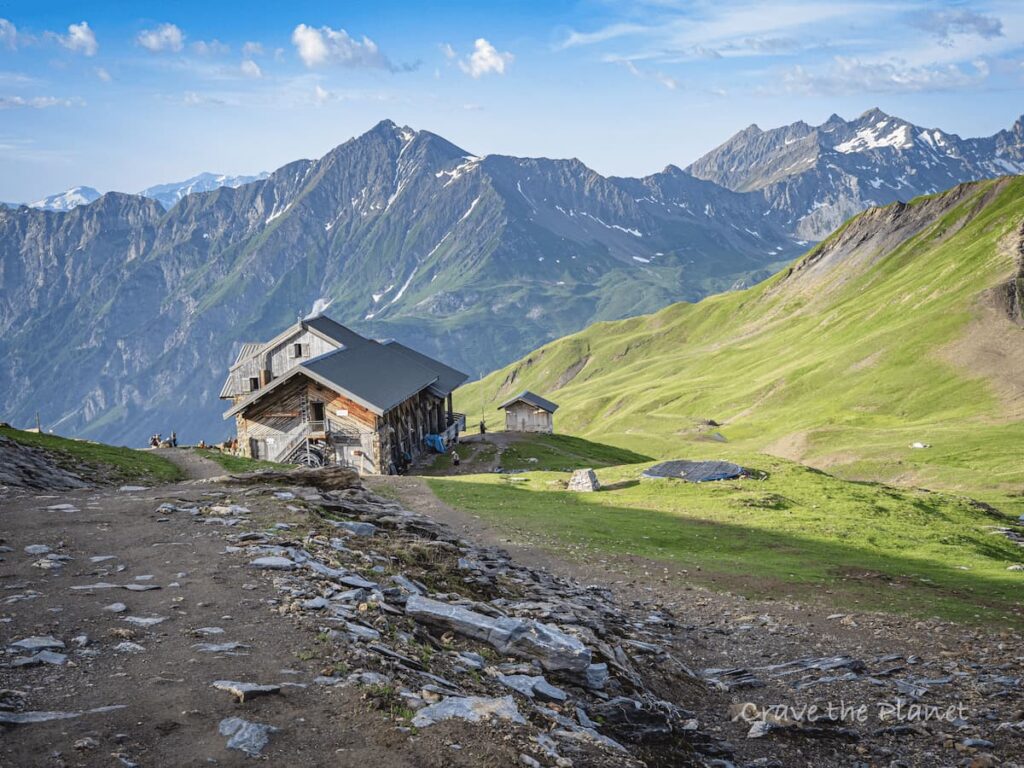
Alpine Bivouac Able to Produce Its Own Water and Energy

In merely a few months, a multitude of athletes from across the globe will converge on Milan for the 2026 Winter Olympics. Alongside winter sports, the Italian metropolis will also feature an avant-garde bivouac crafted by Carlo Ratti Associati (CRA), in partnership with Salone del Mobile.Milano. Tucked away in the adjacent Alpine scenery, this bivouac is not just a display of organic architecture; it also reflects on self-sufficiency, particularly in such a harsh climate.
Set to launch as an urban pavilion during the Olympics, CRA’s bivouac effortlessly integrates into the surrounding mountains due to its modest silhouette. To achieve this, the firm produced a 3D scan of the rock formations in the Alps, which influenced the project’s elegant architectural shapes. The shelter is further concealed by its materials, comprising cross-laminated timber, aerogel, and metal, all inspired by the crystalline structures of the Alps. The outcome is a minimalist edifice that highlights rather than obstructs the snowy landscape, featuring a striking glass wall that dissolves the boundaries between indoor and outdoor areas.
At the core of the project is sustainability. The bivouac features a 5KW peak photovoltaic system with storage, supplying energy for all its power requirements, including network connectivity. In the absence of natural water sources, the shelter also employs an air condensation system that generates several liters of drinkable water daily, providing climbers, trekkers, and other visitors with a steady supply of clean water, even in emergencies.
In contrast to conventional bivouacs, which are vibrantly painted to counteract foggy weather, CRA’s shelter adopts a more understated method: a bright red light, activated only in conditions of poor visibility.
“Regrettably, contemporary bivouacs frequently resemble airships that have landed upon our stunning Alpine landscapes,” Carlo Ratti, co-founder of CRA, remarks. “In this case, we adopted the contrary strategy: a structure that fuses as closely as possible with the surroundings.”
During the Olympics, the bivouac will be presented as a temporary pavilion, honoring Alpine culture, aesthetics, and architecture. Following the conclusion of the games, the shelter will be airlifted by helicopter to its permanent location at a higher elevation, where it will continue to accommodate climbers. This cyclical process aligns with the project’s focus on green architecture and self-sufficiency, particularly as the Alps and neighboring areas face challenges from climate change.
“The eminent Italian architect Gio Ponti once remarked that architecture is ‘like a crystal,’” Ratti shares. “We embraced that notion literally in this project, utilizing digital fabrication to conceive a bivouac as if it were a natural part of the rock formations that define the Alps.”
To discover more about the forthcoming Alpine bivouac, visit the Carlo Ratti Associati website.
For the 2026 Winter Olympics in Milan, Carlo Ratti Associati has created a self-sustaining Alpine bivouac capable of generating its own electricity and water.
Carlo Ratti Associati: [Website](https://carlorattiassociati.com/) | [Instagram](https://www.instagram.com/crassociati)
My Modern Met permitted the use of photos by Carlo Ratti Associati.
Related Articles:
[Artist Draws From Architecture and Biology To Create Ceramic Homes for Bugs To Live in [Interview]](https://mymodernmet.com/raphael-emine-3d-printed-ceramics-sculptures/)
[MAD Unveils Giant Graceful ‘Chinese Paper Umbrella’ at the 2025 Venice Architecture Biennale](https://mymodernmet.com/mad-architects-chinese-paper-umbrella/)
[Tokyo Exhibition Celebrates the “Primitive Future” Architecture of Sou Fujimoto](https://mymodernmet.com/sou-fujimoto-exhibition-mori-art-museum/)